Having a Plantar Fasciitis stretching routine is an essential part of the recovery process and should be adopted by all people who are suffering from the condition.
Why should you do Plantar Fasciitis stretches? A plantar fasciitis stretching routine allows you to gently stretch the plantar fascia ligament, prior to putting your body weight onto your foot, and reduces the chances of re-injury.
You will notice from the statement in bold above that the keyword is ‘prior’ to putting weight on the foot.
The 5 minute Plantar Fascia stretching routine that follows is to be performed before you get out of bed, or stand up from a period of rest.
When you rest, the plantar fascia ligament contracts and slowly begins to heal the micro tears that have developed. When you stand and apply weight to the foot, the plantar fascia is abruptly stretched, and those partially healed micro tears are torn open once again, creating pain and re-injury.
You can read more about this constant re-injury proces in our other articles
Why does Plantar Fasciitis Hurt More In The Morning?
How To Eliminate The Constant Pain of Plantar Fasciitis
Doing these stretches is probably the most beneficial element of your recovery, and it cannot be stressed enough how important it is that you attempt to do them after every period of rest.
The more you can do to prevent further injury to your plantar fascia, the quicker your recovery from the condition will be.
Is 5 minutes too much to ask in exchange for being pain free within a few weeks, versus months of increased pain and discomfort?
Ok, let’s take a look at the stretches.

5 Minute Plantar Fasciitis Stretching Routine
Remember that all of these stretches are to be performed after a period of rest lasting more than 30 minutes.
They are to be performed in the seated position, either on the bed or chair prior ro standing and applying weight to your foot.
You only need to apply these stretches to the affected foot, however doing both feet may prevent future injury to the currently unaffected foot.
The Alphabet Ankle Rotation
With this stretch, you are going to write the alphabet in the air with your foot.
This stretch works the ankle and foot to allow a full range of motion and eases pressure on the Plantar Fascia.
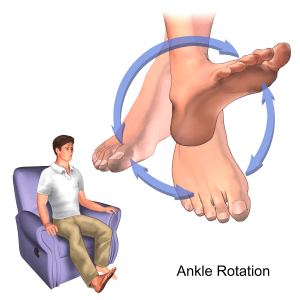
- Sit on the edge of the bed or chair
- Raise your foot with your leg stretched and knee straight.
- Slowly rotate your ankle clockwise and anti-clockwise
- Now pretend to write the alphabet in the air with your foot
- Write the alphabet once and move on to the next stretch
Toe Curl Extensions
This stretch will help gently lengthen the plantar fascia from its contracted position.
- Sit on the edge of the bed or chair
- Raise the affected foot across the opposite knee
- Place one hand over the heel and use the other hand to hold your toes
- Gently pull the toes upwards and back towards the shin.
- Stop when you feel a stretch in your arch and hold for 10 – 20 seconds.
- Never pull the toes to the point where it causes pain.
- Repeat 5 times
Arch Stretch & Massage
This is a combined stretching and massaging technique for the arch of the foot.
You can use a tennis ball, water bottle, massage ball or roller to do this exercise.
- Sit on the edge of the bed or chair
- Place the ball, bottle or massage bar under the affected foot
- Gently roll your foot back and forth across the massager applying gentle pressure
- Be sure to roll across the whole base of the foot from heel to toes
- Keep going for 1 minute
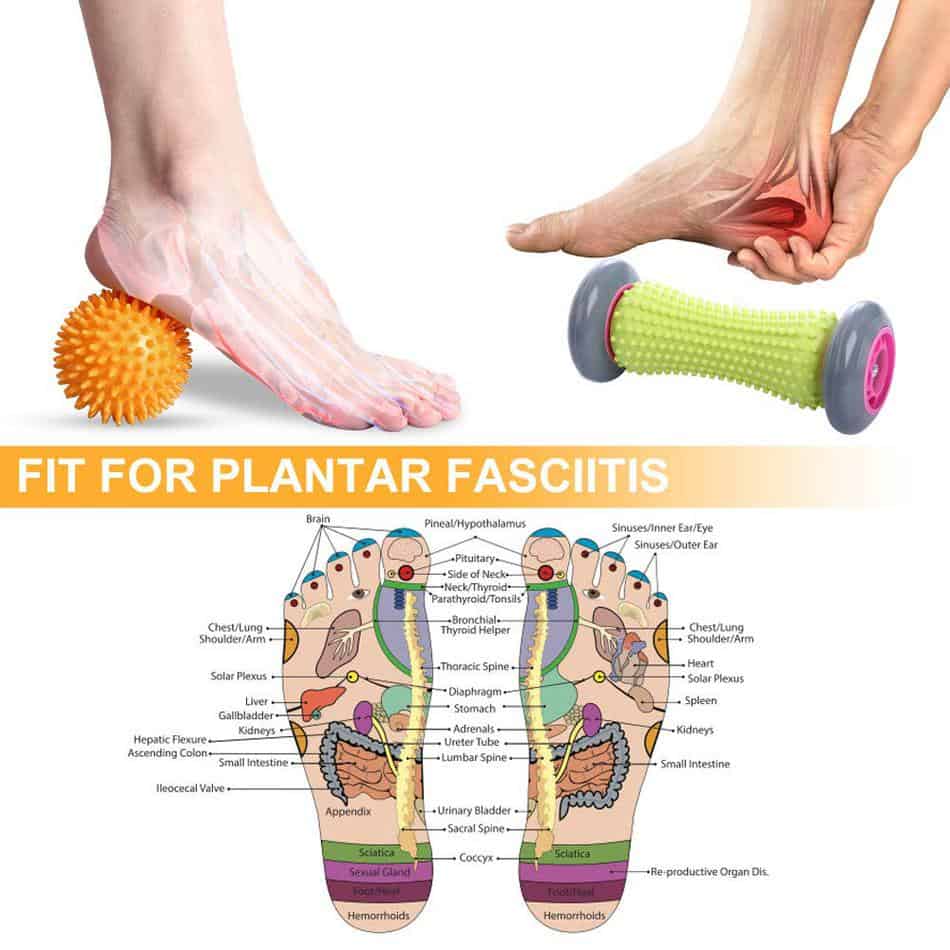
Click Here To Purchase From Amazon
Towel Stretch
This is the last stretch in the routine.
Using a towel, we will now gently stretch the plantar fascia further so that your body weight can be applied to the foot without causing further damage.
- Sit on the edge of the bed or chair
- Place a towel around the base of your foot
- Hold each end of the towel and gently pull towards you keeping the leg straight
- Reduce pressure if you feel pain or discomfort in the knee
- Focus on the arch, ball and heel
- Continue for 1 – 3 minutes total.
As you can see, all of these stretches are developed to help gently stretch the plantar fascia ligament so that it doesn’t undo the healing that has already begun.
By allowing yourself just 5 minutes to do this plantar fasciitis stretching routine each morning, and after each significant rest period, you really will rapidly improve your chances of a speedy recovery from the condition.
You should begin to see a significant improvement within a short space of time, and be potentially pain free within weeks, provided you begin the stretching routine at the early onset of the condition.
More advanced conditions will obviously require a longer period of recovery as the damage will likely be greater in the plantar fascia.
Important Note: Once you have completed the stretches it is vital that you put on a pair of supportive footwear before standing and walking. Wearing slippers or going barefoot will not provide the arch support required and may result in excessive stress being place onto the plantar fascia. There are some reasonably priced options for orthotic supported slip on shoes that would work as casual footwear around the house. These orthopedic flip flops by V-Step get good reviews from plantar fasciitis sufferers on Amazon. 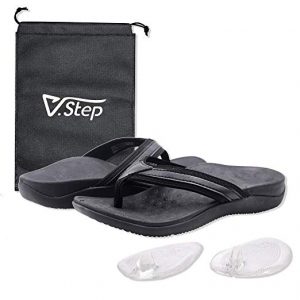 Alternatively, you could add some kind of orthotic inserts into your current favorite pair of slippers or shoes. Take a look at our article about the different kinds of foot orthotic inserts. Orthotic Foot Inserts Explained
Alternatively, you could add some kind of orthotic inserts into your current favorite pair of slippers or shoes. Take a look at our article about the different kinds of foot orthotic inserts. Orthotic Foot Inserts Explained




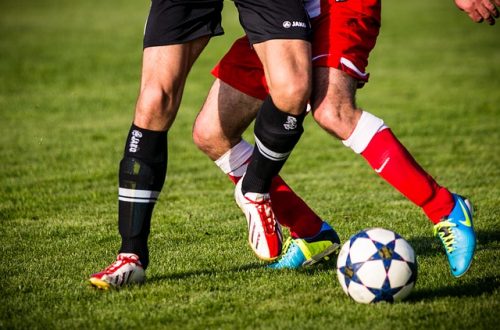
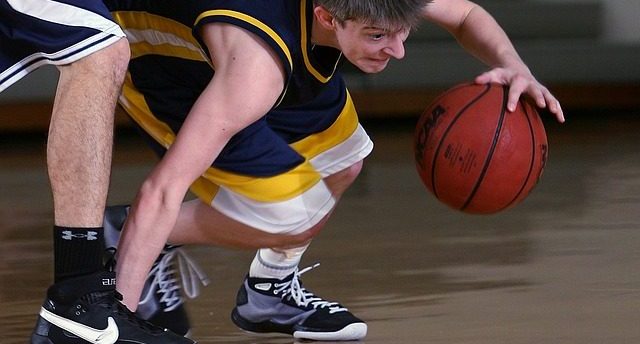
One Comment
Pingback: